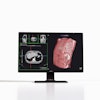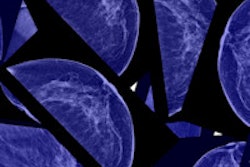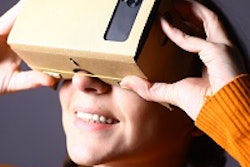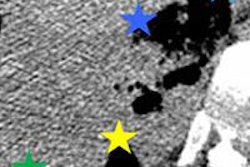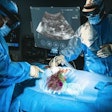Dear Advanced Visualization Insider,
Researchers from Massachusetts General Hospital (MGH) are doing their part to make reduced-prep CT colonography (CTC) more accurate and easier to read. It's a critical task, considering that many patients think of cathartic bowel cleansing as the worst part of colorectal cancer screening -- unpleasant enough to make them skip screening entirely. Evidence suggests these individuals are more likely to agree to get screened if limited-prep CTC is available.
In a recent presentation, the MGH researchers took aim at pseudoenhancement, the artifacts that surround contrast-tagged areas of the colon and can obscure important findings. They developed an algorithm that not only unravels the distortions caused by these tagging artifacts, but corrects the underlying image data as well. Learn how the technique works in this edition's Insider Exclusive.
In breast cancer screening, dense breast tissue confers a higher risk of malignancy, along with more difficult reading of mammography images because tumors can be obscured by dense breast tissue. New automated techniques are coming online to measure breast density automatically and help select which women should undergo additional screening. But how good are they at predicting eventual malignancy? A new study from the Mayo Clinic put two automated systems head to head and compared them with conventional density measurements made by a radiologist. The results were a little surprising.
In cardiac imaging, the Internet has been abuzz with the story of how doctors in Florida used a low-tech stereoscopic viewer from Google to visualize an infant's cardiac CT images to plan her surgery and eventually save her life. The grim diagnosis said it all: hypoplastic left heart syndrome, a hypoplastic aortic arch, double outlet right ventricle, mitral atresia, a ventricular septal defect, and abnormal pulmonary veins draining to the coronary sinus. But using Google Cardboard, physicians at Nicklaus Children's Hospital in Miami decided to attempt a complex procedure to correct the litany of congenital defects. For the rest of the story, click here.
In the follow-up of patients with lung cancer, respiratory motion remains a thorny problem because perfusion CT requires breathholds that are longer than most patients are able to achieve. So a study team from California and Pennsylvania developed a motion-stopping method that allows patients to breathe freely while perfusion CT is being performed, while still producing artifact-free images. Get the details on how they did it.
In CT lung cancer screening, doctors can now measure coronary artery calcium (CAC) while looking for lung cancer thanks to an automated CAC scoring technique developed in Europe and applied to a lung cancer screening population in Canada. Considering that heart disease kills more smokers than lung cancer, automated CAC seems like a good bet. Find out how well it performed by clicking here.
Finally, 3D printing helps surgeons plan the most complex surgeries by creating models that are more useful than images on a screen. It helped a group of Texas doctors mount a successful 26-hour operation to separate conjoined twins. Details of the complex surgery were unveiled at the RSNA 2015 meeting in Chicago. For the rest of the story, click here.
We invite you to scroll through the links below for more news about 3D and advanced visualization research, right here in your Advanced Visualization Community.


